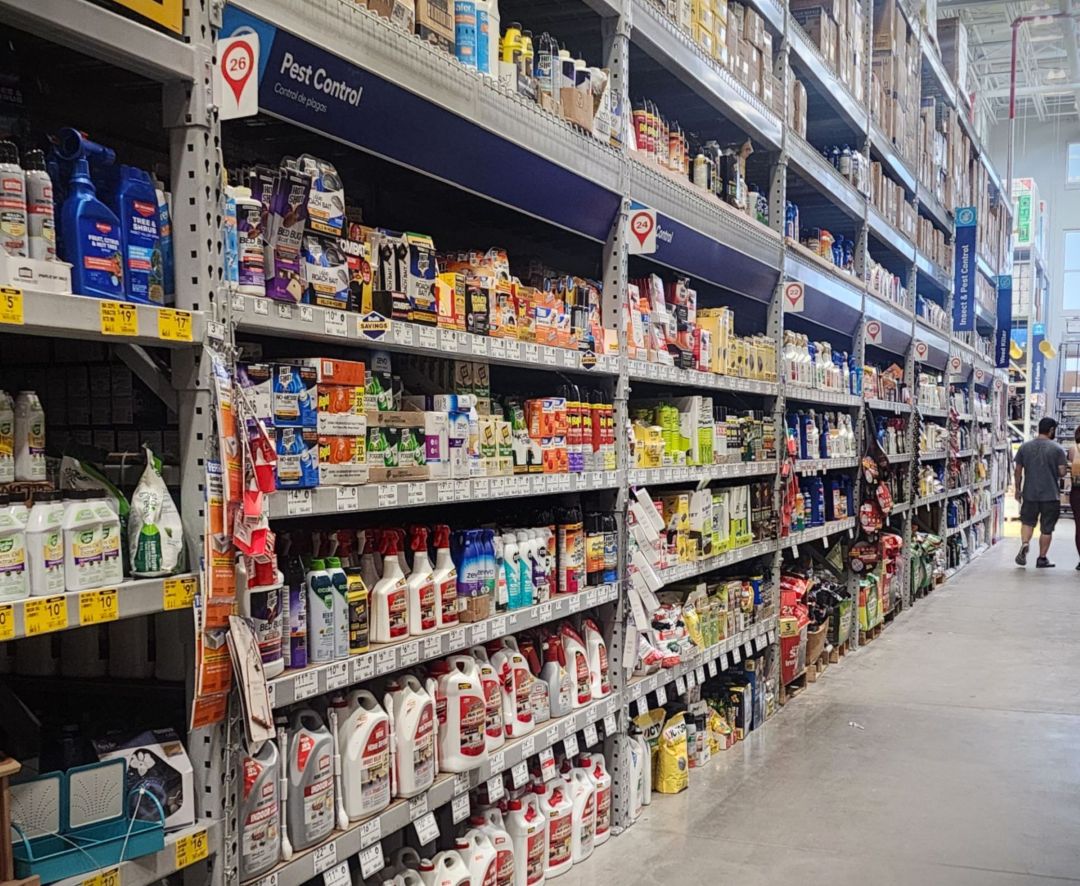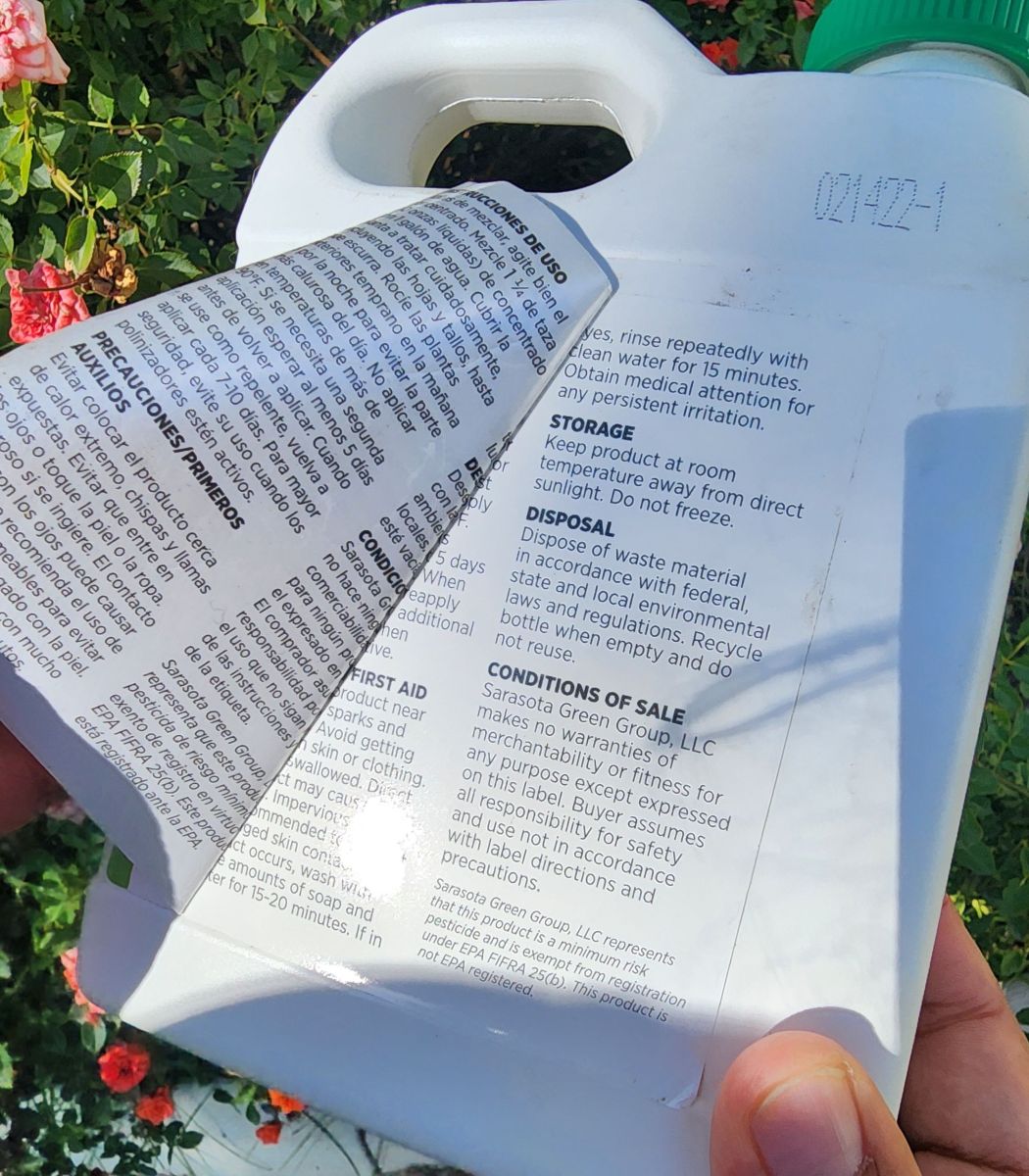Match the right product to the plant problem
There are many definitions of the word “pest,” and you may feel very differently about pests than someone else does. What some people tolerate, others cannot stand. A pest might be annoying (ants), damaging to plants (rabbits), a health concern (ticks) or cause fear (black widow spiders). However, only a small number of pests cause serious injury to plants or animals, so pesticides may not be needed in many cases. What is a pesticide? A pesticide is a substance that destroys, prevents or repels a pest. There are many types of pesticides. Herbicides kill plants, insecticides kill insects, fungicides kill fungi, miticides kill mites and rodenticides kill rodents.

J. Johnson, University of Nevada, Reno Extension
With so much to choose from, how do you decide what to do and which product to use? Get help from the University of Nevada Cooperative Extension or other trained professionals.
Do pests cause all plant problems?
No! Often, plant problems in northern Nevada result from other factors. These include weather, wind, lack of water or excess water, soil type, soil compaction, poor drainage, planting the wrong plant for the site, restricted roots or poor cultural practices, such as poor pruning or improper fertilization. Since many plant problems are not caused by living pests, it is important to determine the cause of the problem or symptoms before using a pesticide.

J. Johnson, University of Nevada, Reno Extension
The label may be attached to the back of the product. Peel it back to read all the information.
Questions to Answer Before Selecting and Using a Product
- The following questions will help you figure out if pesticides are needed, and how to use them safely and effectively.
- Has the cause of the damage been properly identified? Bring weeds, insects and samples of damaged plants to any University of Nevada Cooperative Extension office. They’ll help identify the cause of the damage.
- How bad is it? Can you tolerate this level of damage if it’s not harming the plant? If yes, maybe you don’t need to use a pesticide.
- What other pest management tools are available to help control this pest? Can you avoid using a pesticide entirely?
- What would you like to accomplish in applying a pesticide? Do you want immediate results, short-term control, or the safest product for use around kids and pets?
- Did you read and understand the label? It’s your legal responsibility and can head off many problems. Asking for help from a salesperson is not a substitute for reading the label.
- Is this the right product for the problem? Is the pest, or type of pest, listed on the label?
- Can you apply the product to the specific site? For example, some products cannot be used on food crops or landscape plants.
- Are there any restrictions on the use of the product, for example, on sandy soils or next to water?
- How much do you need? Buy only enough for the job so you won’t have to store it and worry about leaks or accidents.
- When is the best time to apply the product? Does it work best when applied to a young, actively growing weed, rather than a big, mature weed? Does it work on immature bugs or only adults?
- What protective clothing and gear must you wear? Do you have pesticide-resistant gloves? If not, buy some!
- What will you use to mix and apply the product? Whenever possible, buy ready-to-use products. This lessens the chances of spills during mixing and decreases your exposure.
- How long do you have to wait after the application until it is safe to re-enter the area? The label includes this information. For example, it may tell you to wait until the product has dried before entering.
 J. Johnson, UNCE : Select products that are safe for use around children and pets.
J. Johnson, UNCE : Select products that are safe for use around children and pets.
Before buying a pesticide:
- Identify the cause of the problem. It may not be a pest!
- Use the right product. To kill weeds, purchase an herbicide; to kill insects, use an insecticide.
- Read and understand the entire label before making a decision. Make sure the product is approved for use on the site, pest and plant.
- Follow all directions carefully.
- Use the amount specified on the label. More is not better. Using more than the rate listed on the label may damage your lawn and landscape, harm you, your family or pets and damage the environment. And, it’s illegal.
- Know that quick results may not be lasting results. Often, taking the easy way out results in worse problems down the road.
READ More Pest Solutions
University of Nevada, Reno Extension
The above information is based on a printed factsheet (What to Know Before Using a Pesticide) originally published in 2012.


